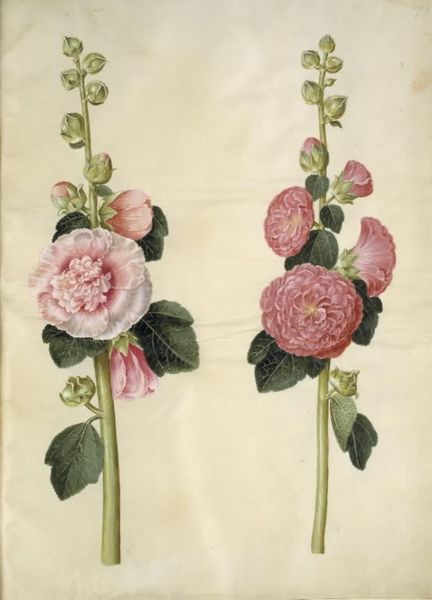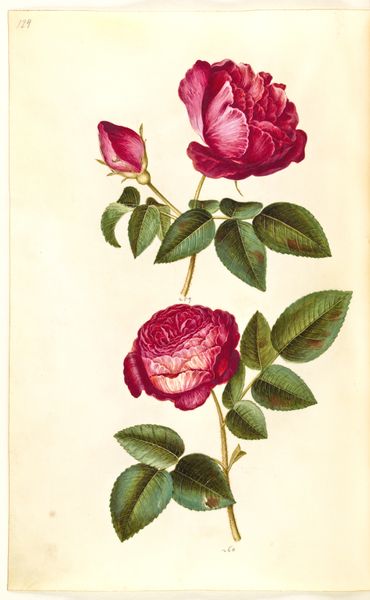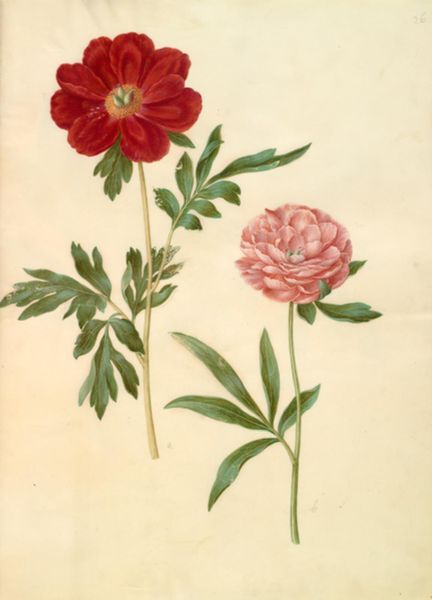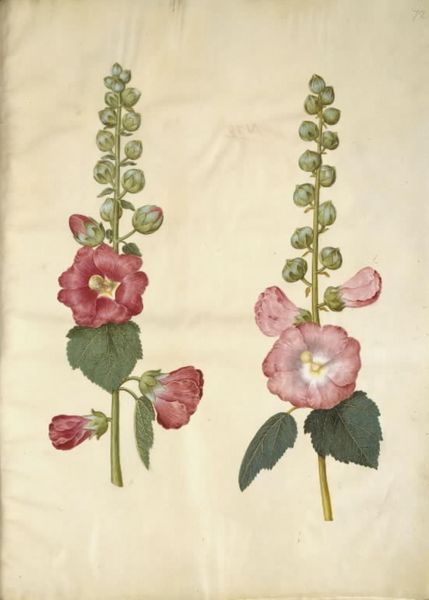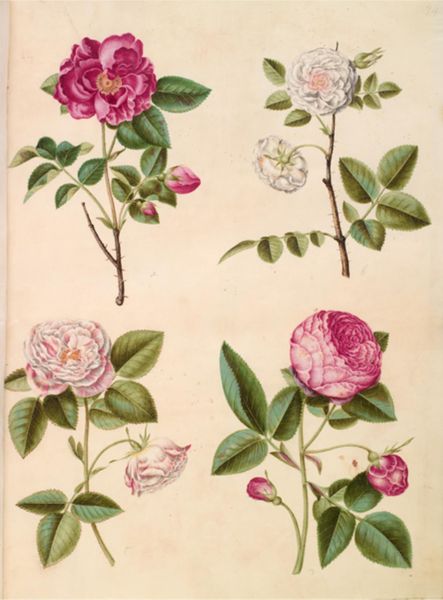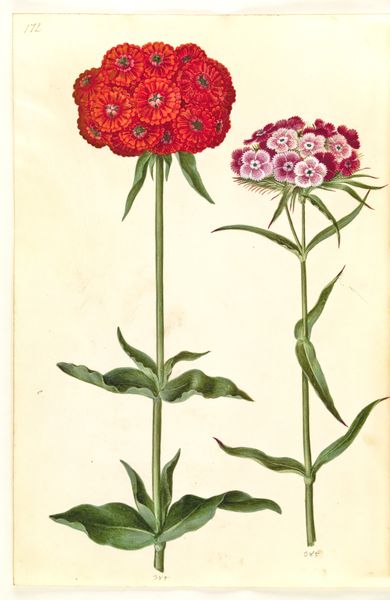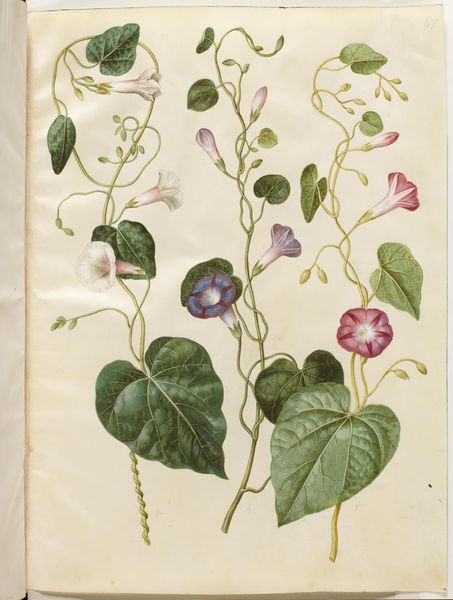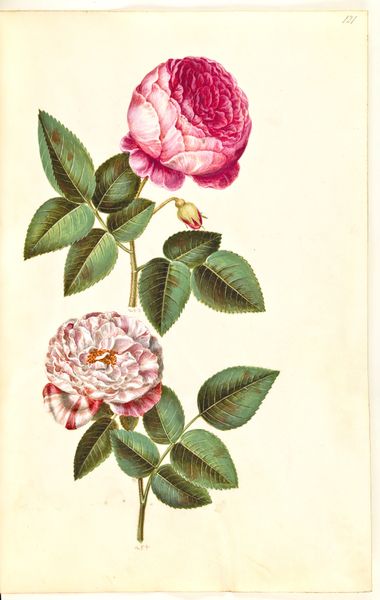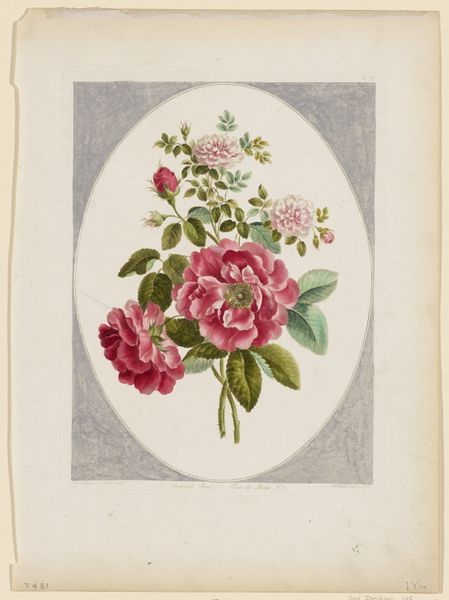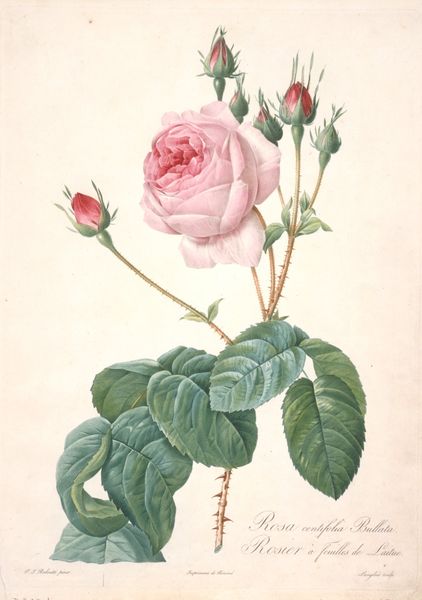
drawing, gouache, watercolor
#
drawing
#
water colours
#
gouache
#
watercolor
#
watercolour illustration
#
academic-art
#
botanical art
#
watercolor
Dimensions: 505 mm (height) x 385 mm (width) (bladmaal)
Curator: This delightful watercolour artwork is titled "Alcea rosea (have-stokrose)", created between 1649 and 1659 by Hans Simon Holtzbecker. You can find it here at the SMK, Statens Museum for Kunst. Editor: Immediately striking! The way the light catches the petals—such meticulous rendering of form and color. The contrast between the delicate blooms and the firm verticality of the stalks creates a pleasing tension. Curator: Holtzbecker's masterful handling of gouache and watercolour here elevates botanical illustration beyond mere scientific documentation. These are not just flowers, they're also symbols, hinting at luxury trade, class, and perhaps the artist's place within a culture of exploration and mercantilism. Consider who commissioned and consumed botanical illustrations at this time, and what it meant to accurately capture the world through art. Editor: I'm drawn to how the composition directs the eye. The stems divide the page, establishing a rhythm that guides you upward to the closed buds, echoing the visual motifs in the flowers. Also, the execution is fascinating – Holtzbecker renders the layered petals and velvety texture using careful gradients of light and shadow to achieve this remarkably convincing effect. Curator: And that velvety texture! The creation process itself likely involved layering, skilled labour, expensive pigments sourced from faraway lands, all part of the economic engine driving the Golden Age. How was the paper made? Who mixed the pigments? These choices speak volumes. Editor: True, but equally important is that interplay of warm pinks and cooler greens and how he uses tonal variation to create volume and depth. Even the subtly aged paper creates a kind of harmony. It feels both naturalistic and intentionally crafted. Curator: Indeed. But we mustn’t forget, this artwork is inextricably linked to colonial expansion and a burgeoning market for the exotic and beautiful. This "Alcea rosea" served as currency and was made for social elites. Editor: While its cultural context is important, I believe the inherent beauty, the skillful manipulation of form and colour, allows it to transcend mere documentation, offering us today an accessible view that rewards contemplative viewing. Curator: Perhaps the inherent tension between art and social object is a constant; reflecting its beauty and material story expands understanding. Editor: Well said. It encourages one to revisit how seemingly simple studies also echo complexity.
Comments
No comments
Be the first to comment and join the conversation on the ultimate creative platform.
